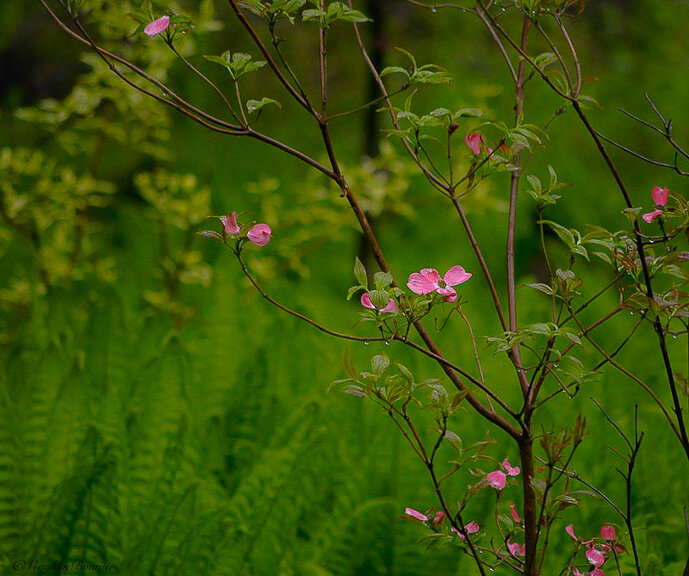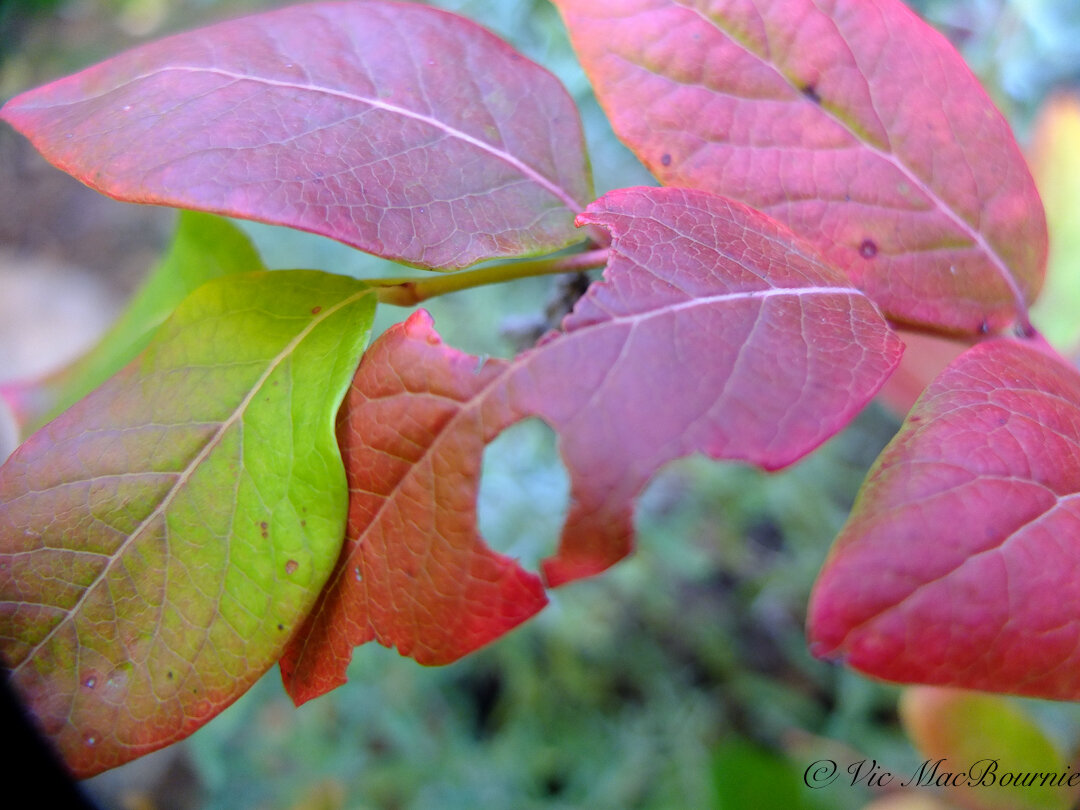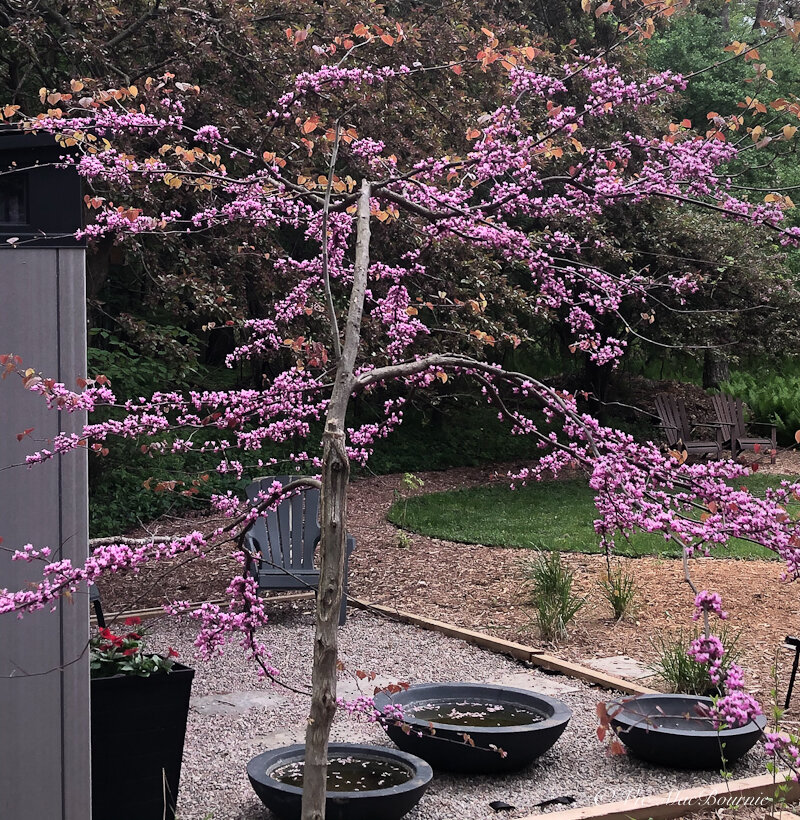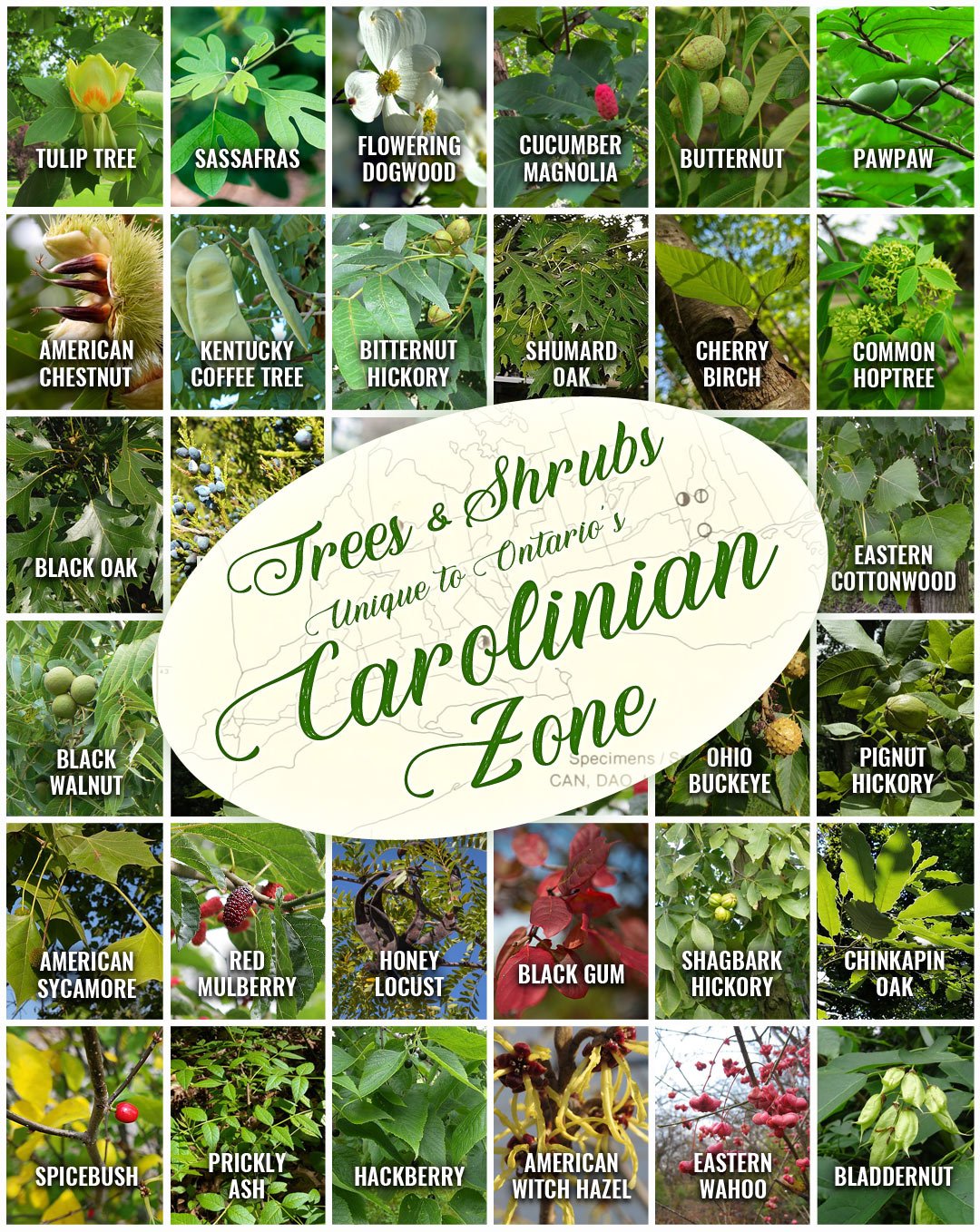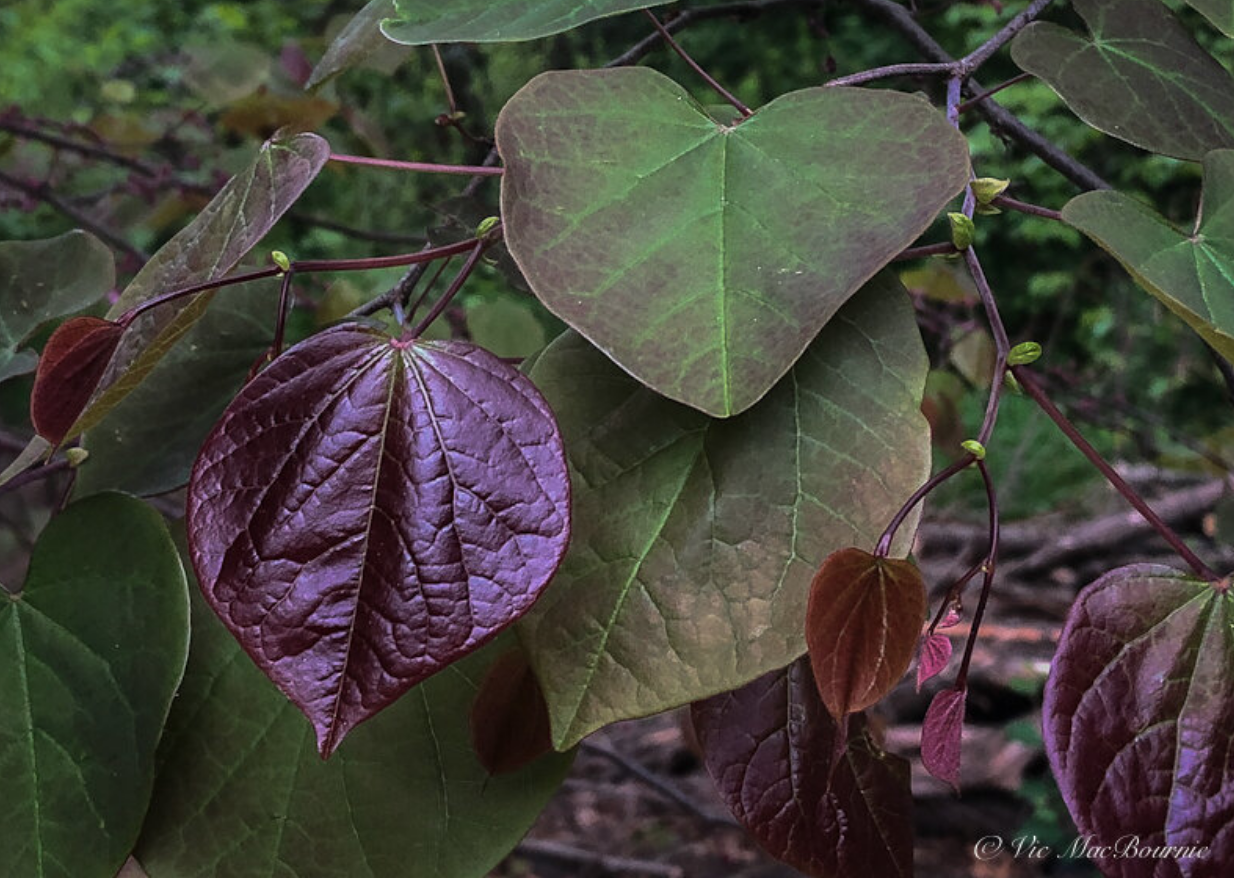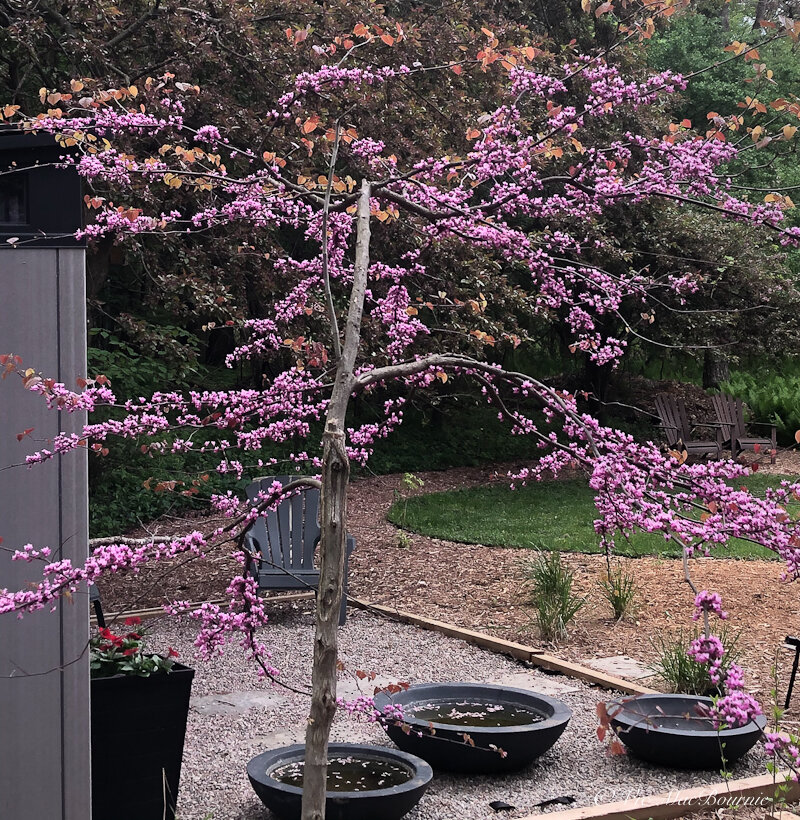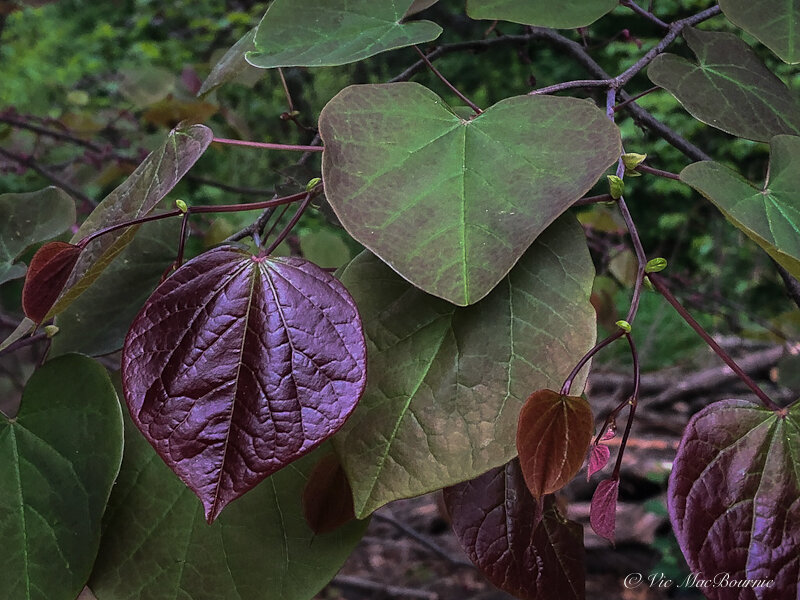Three of the best Carolinian under story trees (perfect for small yards)
If you are lucky enough to live in the Carolinian forest zone in Ontario or the United States you are able to grow some of the finest understory trees. Here are three of the best understory trees, Redbud, dogwood and Pawpaw. They are small trees perfect for today’s smaller backyards.
Native trees need to be in our gardens
If you are lucky enough to live in the Carolinian zone your garden can be home to a host of exceptional native trees unavailable to many gardeners in colder regions of Canada and the United States.
The Carolinian Canada zone in southern Ontario is characterized by the predominance of deciduous trees and actually stretches well into the United States from the Carolinas, through the Virginias, Kentucky, Tennessee, Maryland, Delaware, Pennsylvania, parts of Ohio and New York state to name just a few.
Dogwood among the ferns in the back woodland garden.
In Canada it includes gardening zones 6-7 and shares many of the same animals, trees, flowers and shrubs.
Trees in the Carolinian zone include upper story trees such as oak, hickory, tulip tree and walnut.
But what are the best native understory trees in the Carolinian zone? Carolinian forest understory trees are among the finest and most showy of the available smaller trees, and most would consider the dogwood and redbud to be the showiest. I’m suggesting the Paw Paw to round out the top three for its outstanding fruit production.
(For more on the importance of native plants, trees and shrubs in our gardens, go here.)
These understory trees are ideal for smaller backyards that are common in many of today’s urban and suburban yards.
Let’s take a look at three of the best.
This image illustrates the work of our native carpenter bees who use the Redbud leaves of the Forest Pansy cultivar for their nests. The leaves are just beginning to turn colour for their autumn show.
Redbud (Cercis Canadensis)
The Eastern Redbud, is a hardy understory tree that grows in zones 4-9. It is native to Southern Ontario and is found throughout most of the United States from Florida through to California.
It grows to about 30 feet high with a spread of 35 feet and is available both as a single-stem tree or a multi-stem tree. It has a rounded canopy and tolerates clay soil and the presence of Black Walnut.
My experience is that deer primarily leave the tree alone and outside information seems to back up my findings. So if you are in deer country, put this tree on your list. It’s always a good idea, however, to buy them large enough that deer cannot reach the upper part of the tree.
Redbuds are easily grown in average, medium moisture, in well-drained soils in full sun to part shade.
It is prized for its spectacular early spring bloom of a profusion of tiny pink flowers that lasts for weeks covering the branches prior to the heart-shaped leaves emerge. The result is a stunning early spring display that is really unmatched by any other tree accept maybe the native Florida dogwood which pairs perfectly with the native Redbuds.
One of our Redbuds in full bloom. This is the Forest Pansy that grows beside our shed and provides beautiful magenta/pink blooms against the grey walls of the shed in early spring.
Once the flowers fade the heart-shaped, dark green leaves emerge and remain throughout the summer. The leaves, a favourite for carpenter bees, will eventually put on an impressive fall show of bright, harvest-yellow leaves before falling to the ground. Small, purplish seed pods remain on the tree for a while providing winter interest.
The tree blooms on the previous year’s growth, so it’s best to prune the tree in early spring, after the blooms fade and before it sets bud for next year.
In the wild, the tree is found in woodlands and along creek beds and rivers where it grows as an understory tree in the shade of taller hardwoods and conifers.
In your garden, it can be grown as a specimen or in small groups and woodland margins in a naturalized setting. It is the perfect small tree to grow near a patio or deck.
There are a number of cultivars available including “Appalachian Red” a smaller red flowered variety (zones 4-9), “Ace of Hearts” a more compact form with a dense, domed shaped canopy growing to 12 feet with a 15-foot wide canopy, “Silver cloud” a variegated form of soft green leaves blotched with white that are slightly smaller than the species plants, “Covey” is a small weeping cultivar with a dense umbrella-shaped crown with contorted stems and arching to pendulous branches. Covey is particularly good for small yards or beside patios and decks.
“Forest Pansy” is a purple leaved cultivar. It is one of the most popular cultivars both for its spring show of flowers and its fall show where leaves turn shades of reddish-purple and orange. In cooler climates, the trees foliage retains its rusty/burgundy colour throughout the summer. You can read one of my earlier posts on the Forest Pansy cultivar here.
Dogwood (Cornus Florida)
Often considered the queen of flowering native deciduous trees, there is no arguing that the flowering dogwood (Cornus Florida) deserves a royal welcome in any garden big or small, urban or suburban.
Growing 20-40 feet in height with a delicate horizontal habit of its spreading crown and long-lasting, showy white and pink spring blooms. The 3-inch flower, which are actually primarily large showy bracts, bloom prior to the leaves unfurling giving the tree its spectacular show. Once the spring flowering is complete, the tree’s graceful, horizontal tiered branching habit give way to red fruits that last only as long as birds will allow.
This Carolinian Zone poster was created by Justin Lewis. It is best viewed on a tablet or desktop.
The show does not end after the spring bloom and showy fruit of summer. The scarlet autumn foliage provides the perfect backdrop to the vibrant reds and oranges that often dominate the fall landscape.
In the wild you will find the tree growing near streams, on river banks, in thickets, shaded woods and woodland edges. in shade or part shade. It prefers Rich, well-drained, acidic soil. It can grow in sandy, sandy loam and medium loam that is acid based.
In your garden use it as a specimen but give it room to spread its horizontal, tiered branches as it matures. Its fruit will attract a variety of birds as well as mammals throughout the summer. It will attract a host of butterflies, moths and insects, but is known as the host plant for the Spring Azure caterpillar. The spring azure butterfly is an attractive butterfly with blue undersides marked with black and gray spots.
It is also considered to be especially attractive to native bee species.
It is best pruned in early spring after blooming and efforts should be made to prevent complete drying of soil by mulching the area around the tree. They prefer not to grow in a lawn or surrounded by grass.
Anthracnose disease is an invasive disease, first confirmed in Ontario in 1998 (earlier in the United States) that is threatening the native dogwoods. It is a foliar disease caused by a fungus that can lead to damage and eventual mortality of the tree. It attacks both the Cornus Florida and Pacific dogwood (Cornus nuttalli). At present, there is no cure for the disease.
The emergence of Anthracnose has resulted in many gardeners planting Cornus Kousa varieties which are also beautiful and have many of the same benefits but are not native to the Carolinian zone and flower after the leaves have emerged rather than before.
Don’t let Anthracnose stop you from planting the native tree. They are too beautiful not to have in your garden.
Pawpaw (Asimina triloba)
Imagine going out in your backyard and picking a large piece of fruit (larger than a pear) that tastes as sweet as any mango you’ve tasted.
You might think you’re in some exotic spot, not in southern Ontario or parts of Eastern United States. But you would be wrong.
The Pawpaw tree is not common any longer but it’s making a real resurgence as ecological and food forest gardeners discover the incredible benefits of growing this native tree with its massive, exotic-tasting fruit.
The understory tree reaches about 20 metres tall, with large 30-centimetre long leaves that hang down adding to the tree’s tropical look. Showy red flowers appear before the leaves emerge followed by the yellow-green fruit that matures in the fall where, if left unpicked, will fall to the ground and provide local wildlife with a feast of delicate-flavoured fruit often described to taste very much like a mango.
Pawpaws prefer moist to wet soils in part to full shade in rich, loam soils.
One of the reasons the Pawpaw may have fell out of favour is it’s unusual flower that has been described as having the smell of rotting meat. In fact, the flowers are actually pollinated by beetles and flies rather than bees.
For this reason, it might be better to plants these trees in a back corner of your yard where you can still enjoy the fruit but not the stench of the spring flowers.
Important links for Carolinian zone information
Carolinian Canada operates an impressive educational website that is a must for anyone looking to gather more information on Carolinian Canada. Click here to visit their site.
In The Zone is an organization aimed at protecting and promoting the Carolinian Forest to gardeners. Click here to visit their site.
Carolinian Forest Wikipedia offers a host of links and information on the Carolinian forest. Click here to check out the site.
Redbud tree many images and a host of information can be found here.
Pawpaw tree images and information can be found here.
More links to my articles on native plants
Why picking native wildflowers is wrong
Serviceberry the perfect native tree for the garden
The Mayapple: Native plant worth exploring
Three spring native wildflowers for the garden
A western source for native plants
Native plants source in Ontario
The Eastern columbine native plant for spring
Three native understory trees for Carolinian zone gardeners
Ecological gardening and native plants
Eastern White Pine is for the birds
Native viburnums are ideal to attract birds
The Carolinian Zone in Canada and the United States
Dogwoods for the woodland wildlife garden
Bringing Nature Home by Douglas Tellamy
A little Love for the Black-Eyed Susan
Native moss in our gardens
This page contains affiliate links. I try to only endorse products I have either used, have complete confidence in, or have experience with the manufacturer. Thank you for your support.
Plant the perfect Redbud (a Carolinian zone favourite)
I consider the Eastern Redbud equal to Dogwoods when it comes to understory trees in the Woodland Garden. It’s incredible spring bloom turns into a green architecturally elegant tree in the summer that comes to life again in autumn with its spectacular canary-yellow fall foliage. What’s not to love about this native understory tree that lights up the spring landscape with its pink blooms and the fall landscape with its golden leaf colour.
Forest Pansy is a real winner in a forest of Redbuds
I’ve always liked Redbuds, but it took a local garden tour for me to fall in love.
With the Redbud, that is. It wasn’t just any Redbud tree, either. It was the Forest Pansy Redbud.
Cercis Canadensis, or the Eastern Redbud, as it is known in gardening circles, is a Woodland tree growing in zones 4-9, native to southern Ontario and most of the United States from northern Florida as far west as California. There are actually a few different varieties of redbud trees, including a Texas Redbud and a Mexican Redbud as well as a Western Redbud (which is a separate species, cercis orbiculata).
Eastern Redbud is part of the Carolinian Canada zone
The Eastern Redbud is the largest of the group, requiring the most water. The tree, which is part of the Carolinian Canada zone, also has larger, less glossy leaves than the other varieties. It grows to about 30 feet with a spread of about 35 feet and can be found as a multi-stem tree or large shrub, to a single-stem specimen. It can take full sun but likes a little light shade as an understory tree in the woodland garden where it puts on its glorious show in early spring with an abundance of pink flowers on bare branches.
For those not familiar with the Redbud, think back to early spring and seeing a small tree with a profusion of tiny pink flowers covering the branches of the entire tree before the heart-shaped leaves had begun to emerge. Remember thinking to yourself, ‘holy smokes what is that’? Well folks, that was a Redbud.
Our Redbud Forest Pansy in its spring bloom in mid May. The Forest pansy leaves emerge with rusty-coloured leaves that can be stunning in the woodland garden. They are a favourite for leaf-cutter bees that cut perfectly round holes in the leaves to line their nest.
Now if a spectacular fireworks of pink, pea-sized blossoms on bare stems in early spring isn’t enough, how about the fact that the tree’s horizontal growth habit gives it a beautiful architectural quality in the garden if, of course, it is left to grow in a natural state and not attacked by a chainsaw or some other tool of destruction.
Still not enough?
The leaves are 2 to 6-inch, heart-shaped and turn a dark green throughout the summer only to turn a spectacular bright canary yellow for fall. They attract many species of birds, bees and butterflies and will grow in most decent soils. They are deer resistant. The deer in my area, at least, have never bothered mine.
The trees are even so beloved that there are Redbud festivals in Texas, Virgina and Wisconsin, just to name a few.
They are also one of the few trees that leaf-cutter bees use to line their nest cavities. Look closely for circles cut out of the edge of the leaves, and you’ll know you have native leaf-cutter bees nesting in your garden. That’s a very good thing. You can rejoice in the fact that the bees cut holes in your leaves rather than trying to find the culprit crawling on the leaves.
I consider the Redbud equal to the Dogwoods as the best understory trees for the Woodland garden. At present I have three in the garden, including a Forest Pansy. The others are a multi-stem Eastern Redbud I added this year to join our single stem tree.
Early spring leaves on the Redbud Forest Pansy.
The Forest Pansy’s leaves are different
And we have not yet even talked about the Redbud I fell in love with. The Forest Pansy is actually a cultivar of the common Eastern Redbud. It has all the best qualities of the original Redbud but the leaves are a more intense red-purple hue. The tiny leaves grow into deep, shiny, leathery looking purple-colored, heart-shaped leaves.
The one I saw on the garden tour was incredible. At first, I didn’t know what to think of the leathery leaves. They almost looked like the tree was going into decline, but of course, it was not.
With that in mind, the Forest Pansy may not be a tree for everyone. Its unique summer colour might be too much for some gardeners to overlook. It is, however, the perfect specimen tree to get the attention of passersby on a garden tour. It might also work as a garden focal point in a Meditation Garden or an Asian-inspired Japanese garden.
Whether it’s a Forest Pansy cultivar or the common Eastern Redbud, consider planting them on the edge of your woodland alongside some dogwoods where you can fully appreciate them. They work beautifully in the natural landscape in groupings of three to five planted together to create an incredible view from a deck or window overlooking the garden. Underplant them with spring bulbs to create truly memorable spring garden designs.
A beautiful Redbud in bloom along a nature trail at the Royal Botanical Gardens in Burlington Ont.
A perfect example of mature Redbuds used in the landscape can be seen in the garden of Linda Vater. Not only are her Redbuds beautifully pruned to accentuate their natural horizontal branching habits, but her use of evening lighting makes the trees a standout in her garden both day and night. The above link takes you to an evening image of her garden with lighted Redbuds. Her YouTube channel is definitely worth checking out for more views of her Redbuds in the back garden.
If you remember one of my earlier blogs on some of the best nurseries to purchase native plants, we talked about Ontario Native Plants mail order company from the Hamilton area. They list Eastern Redbud for about $7.00. If you have the time to wait for them to grow, that’s a pretty darn good price.
Larger specimens can be purchased at most good local nurseries in tree form or multi-stemmed.
Looking for more information on our native Redbud? You might consider this e-book Kindle version from Amazon.
More links to my articles on native plants
Why picking native wildflowers is wrong
Serviceberry the perfect native tree for the garden
The Mayapple: Native plant worth exploring
Three spring native wildflowers for the garden
A western source for native plants
Native plants source in Ontario
The Eastern columbine native plant for spring
Three native understory trees for Carolinian zone gardeners
Ecological gardening and native plants
Eastern White Pine is for the birds
Native viburnums are ideal to attract birds
The Carolinian Zone in Canada and the United States
Dogwoods for the woodland wildlife garden
Bringing Nature Home by Douglas Tellamy
A little Love for the Black-Eyed Susan
Native moss in our gardens
This page contains affiliate links. If you purchase a product through one of them, I will receive a commission (at no additional cost to you). Thank you for your support. This blog would not be possible without your continued support.


